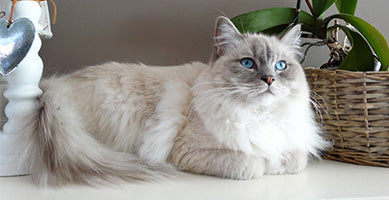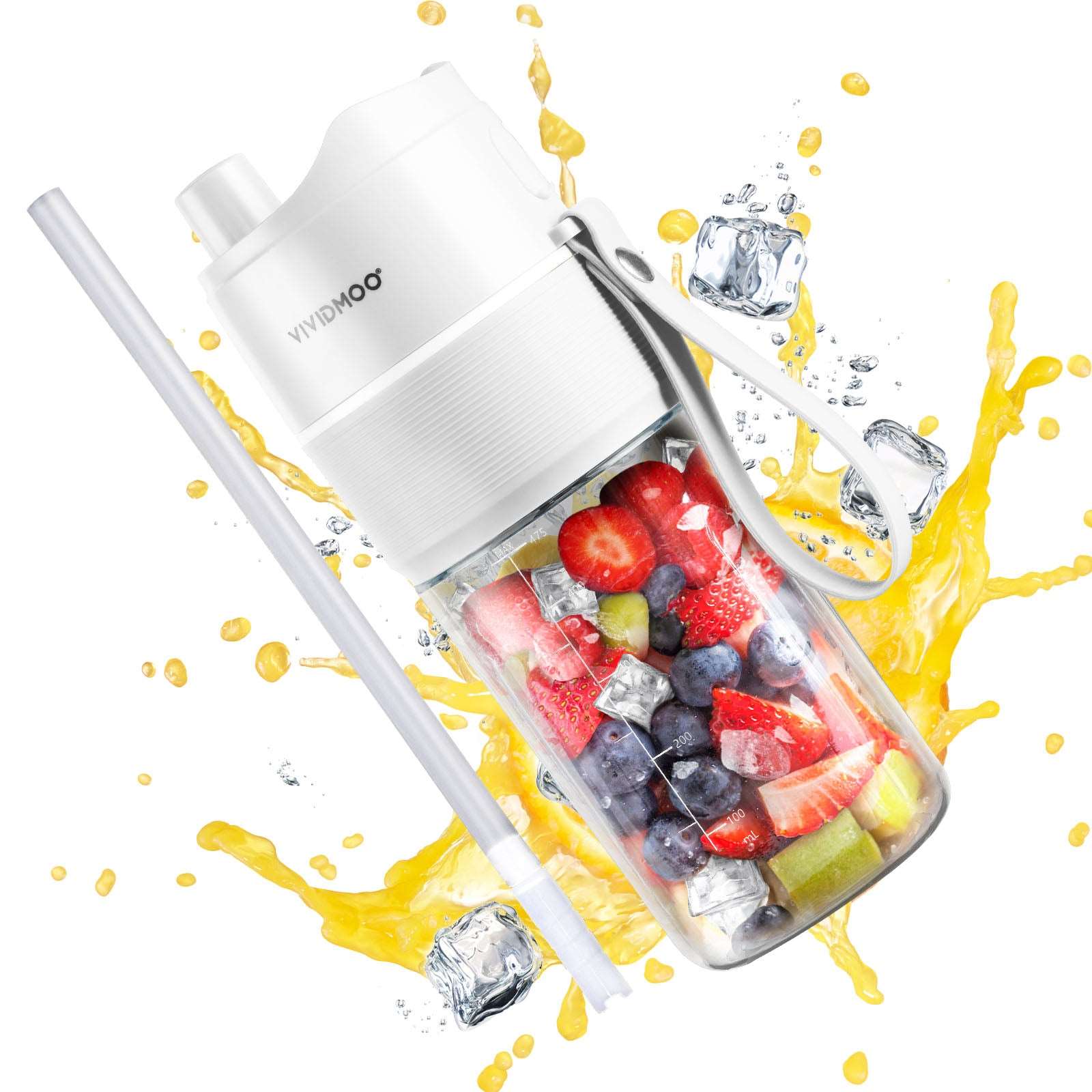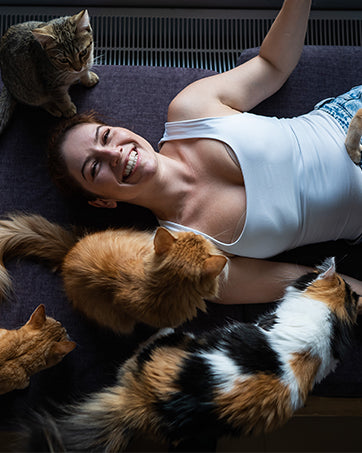Jessica W. Kelvin - Mar.05.2024
Why Do Cats Eat Grass?
7 Insights into Feline Behavior

Evolution of the Cat Litter Box
Embracing the Future with vividmoo
CCats have been revered companions for centuries, adored for their elegance, independence, and spirited personalities. As indoor living became the norm for our feline friends, the need for an effective solution to manage their waste led to the innovation of the cat litter box. This blog traces the fascinating journey from rudimentary sand and ashes to the intelligent automatic cleaning cat litter boxes by brands like vividmoo, showcasing how technology has revolutionized pet care.
The Dawn of Domestic Cat Care
The domestication of cats can be traced back to ancient Egypt, where they were worshipped and held in the highest esteem. Early indoor cats were provided with sand or ashes to mimic their natural waste disposal behavior. However, it wasn't until the 1940s that the first commercial cat litter was introduced, transforming pet care. Made from absorbent clay, this innovative product provided a more hygienic and convenient option for cat waste management, marking the beginning of the evolution of the cat litter box.
Traditional Litter Boxes: Designs and Limitations
Traditional litter boxes were simple trays filled with non-clumping clay litter, sawdust, or even shredded newspapers. Materials like plastic and metal became popular for their durability and ease of cleaning. Despite their utility, these early designs had significant limitations. Odor control was minimal, requiring frequent cleaning to maintain a sanitary environment. Moreover, litter tracking was a common issue, with grains often spreading outside the box, necessitating constant clean-up around the house.

The Shift to Clumping and Silica Gel Litters
The 1980s marked a revolutionary leap in cat litter technology with the introduction of clumping clay litters. This innovation allowed urine to form solid clumps, which could easily be scooped out without changing the entire litter box, significantly improving odor control and reducing waste. Following this, silica gel litters were introduced, offering an even more advanced solution. Composed of tiny, porous beads, silica gel litters absorbed urine and controlled odors more effectively than their clay counterparts, though at a higher cost. Both advancements not only improved the cleanliness and odor management of litter boxes but also prompted manufacturers to rethink litter box designs, making them more compatible with these new types of litter.
Cats:Theobromine Toxic Consumption
Most Cats: 1-10 lbs(0.45-4.6 kg), Large Cats11-25 lbs(5-11.4 kg)
Cacao Beans: Most Cats> 0.05 oz, Large Cats> 0.5 0z
Unsweetened Baking Chocolate: Most Cats> 0.2 oz, Large Cats>2 0z
Dark Chocolate: Most Cats> 0.5 0z, Large Cats>7 oz
Milk Chocolate: Most Cats>1.5 0z, Large Cats>16.5 0Z
White Chocolate: Most Cats>360 oz, Large Cats>4000 0z
Cocoa Powder: Most Cats> 01 0z, Large Cats>10z
Cocoa Bean Mulch: Most Cats>0.1 0z, Large Cats>1 0z

Showing making procedure is a good way to guarantee product quality
Stress Relief
Eating grass can also serve as a form of stress relief for cats, providing a calming activity that distracts from anxiety or boredom.
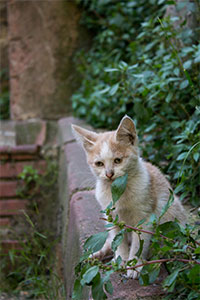
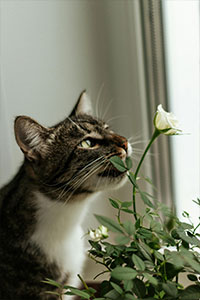
Get customer attention by clean visual and video
Instinctual Actions
Grass eating is an instinctual behavior that may stem from a cat's need to seek out alternative food sources or to induce vomiting to clear their stomachs of indigestible materials.
The Rise of Automatic Cleaning Litter Boxes
As technology progressed, so did the quest for a more convenient and hygienic way to manage cat waste. The late 1990s saw the emergence of automatic cleaning litter boxes, which used sensors and mechanical rakes to sift through the litter and remove clumps into a sealed compartment. These devices offered cat owners the ultimate convenience, minimizing the need for daily scooping while maintaining a clean and odor-free environment. Despite their higher initial cost, automatic litter boxes became increasingly popular, thanks to their ability to save time and improve the overall cleanliness of the cat's living space.
Article credit: Heidi Cohen (https://heidicohen.com/use-blog-to-sell/)
Digestive Aid
Grass acts as a natural laxative, helping cats pass hairballs or other indigestible items through their digestive tract more easily.
Elimination of Parasites
It's also theorized that grass eating may help cats eliminate intestinal parasites, although this benefit is more anecdotal than scientifically proven.
The vividmoo Revolution: Smart Litter Box Solution
Enter vividmoo, a brand that stands at the forefront of the smart pet care revolution. The vividmoo intelligent automatic cleaning cat litter box embodies the culmination of years of innovation in cat litter box technology. With features like automatic cleaning cycles, advanced odor control systems, and waste tracking, this smart litter box goes beyond mere convenience. It offers a hygienic, hands-free approach to litter box maintenance, ensuring a clean environment for both cats and their owners. Additionally, the health monitoring feature provides insights into the cat's wellbeing, making it an indispensable tool for modern pet care.
Conclusion
The evolution of the cat litter box is a testament to the ingenuity of human invention, driven by our enduring bond with our feline companions. From the rudimentary setups of early domestic cat care to the innovative solutions of today, each leap forward in litter box technology has aimed to improve the lives of both cats and their owners. The advent of clumping and silica gel litters brought significant improvements in odor control and cleanliness, setting the stage for the next big leap: automatic cleaning litter boxes.
vividmoo represents the pinnacle of this evolution, offering a smart, automatic cleaning solution that addresses the needs of the modern pet owner. Its intelligent features not only ensure a clean and odor-free home but also offer insights into pet health, elevating the pet care experience to new heights. As we embrace these advancements, it's clear that the future of pet care is here, promising a cleaner, healthier, and more convenient life for pets and their humans alike.
The journey of the cat litter box from its humble beginnings to the high-tech solutions of today reflects the dynamic nature of pet care innovation. As we look forward, it's exciting to imagine what the next chapter will bring. With companies like vividmoo at the helm, the future of pet care technology looks brighter than ever, ensuring our cherished companions receive the best care in the years to come.
How to Safely Introduce Grass to Your Cat
Suitable Types of Grass
Certain types of grass are more beneficial and safer for cats, including wheatgrass, which is often sold as "cat grass."
Growing Your Own Cat
Grass
For the safety and health of your cat, consider growing your own cat grass at home. It's a simple and effective way to ensure they're getting a safe product.
Alternative Behaviors and Solutions
Dietary Supplements
If your cat shows an excessive interest in eating grass, it might indicate a dietary deficiency. Consult with a veterinarian about supplementing your cat's diet.
Behavioral Enrichment
Providing toys, climbing structures, and engaging activities can reduce your cat's inclination to eat grass by offering alternative forms of stimulation.
Why Do Cats Eat Grass?
Exploring the curiosity behind this behavior reveals a complex blend of nutritional, psychological, and instinctual factors. Understanding these can help cat owners provide better care and enrichment for their feline friends.
Owner Experiences and Advice
Personal Anecdotes
Many cat owners have observed their pets eating grass and have noted the benefits or concerns that came with it. Sharing these experiences can offer valuable insights for other pet owners.
Expert Recommendations
Veterinarians and animal behaviorists can provide professional advice on managing grass-eating behavior, ensuring it remains a safe and positive experience for your cat.
FAQs
Cats should not eat chocolate ice cream; not only is chocolate toxic to cats, but ice cream often contains toxic ingredient propylene glycol. Ingesting propylene glycol can lead to anemia in cats.
Say it at the end
Understanding why cats eat grass sheds light on their complex behaviors and the natural instincts that drive them. By providing safe, suitable grass and paying attention to the underlying reasons for this behavior, cat owners can ensure their feline companions lead happy, healthy lives.



